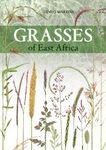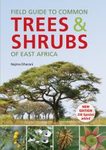Flora / Fauna
By: Sue Edwards(Editor), Mesfin Tadesse(Editor), Sebsebe Demissew(Editor), Inga Hedberg(Editor)
532 pages, b/w line drawings, 2 b/w maps
![Flora of Ethiopia and Eritrea, Volume 2, Part 1 Flora of Ethiopia and Eritrea, Volume 2, Part 1]()
Click to have a closer look
About this book
Related titles
About this book
Please note (February 2013): we received word from the authors involved in this project that, although the University of Addis Abeba holds stock of all published volumes, the University authorities wish not to sell this work outside of Ethiopia. As such, the NHBS can unfortunately no longer supply this series.
The Ethiopian Flora Project was initiated in 1980. Volume 2 as a whole contains 87 families and was estimated to cover over 1100 species. It was thus decided that this would make Flora of Ethiopia and Eritrea, Volume 2, Part 1: Magnoliaceae to Flacourliaceae too big to be printed as one book and it was divided into two parts. Part 2 contains 26 families with 682 species and infraspecific taxa. Part 1 covers the remaining 61 families with 691 species and infraspecific taxa included.
The first dicotyledon family of the indigenous flora is Annonaceae and the last in Vol 2(1) is Flacourtiaceae. However, Flora of Ethiopia and Eritrea, Volume 2, Part 1: Magnoliaceae to Flacourliaceae starts with Magnoliaceae and Cercidiphyllaceae, represented by ornamental trees and shrubs, to meet the aim of covering both indigenous and introduced plants in the Flora area, and because of their pedagogic position in the teaching of plant systematics. Myristicaceae is also included because of its economic importance; it has already appeared in research and could be grown in western parts of the Flora area. Other families indigenous to East Africa but not yet substantiated by herbarium collections from the Flora area are Monimiaceae, Montiniaceae, Rafflesiaceae, Sonneratiaceae, Trapaceae and Cochlospermaceae. Representatives of these families could, therefore, be expected to be found in future collections. The brief descriptions and comments have been prepared by members of the editorial team in Addis Ababa.
A noticeable characteristic of Volume 2 of the Flora is the large number of families with five or fewer species – this is the case for 26 of the families included here. Six of these families, Cabombaceae, Ceratophyllaceae, Nymphaeaceae, Droseraceae, Podostemonaceae, and Callitrichaceae are plants of aquatic habitats, while most of the remaining 20 families are represented by woody species. The largest families in the present volume, Capparidaceae (75 taxa), Amaranthaceae (62), Brassicaceae (61) and Caryophyllaceae (58) have species characteristic of disturbed habitats, particularly agricultural areas and woodlands. This is true also tor the several families with between 20 and 40 species each. We hope that Flora of Ethiopia and Eritrea, Volume 2, Part 1: Magnoliaceae to Flacourliaceae will enable agriculturalists and natural resource specialists to be able to identify and recognize more oj the plants in the Flora area with certainty. Further confirmation can also be done through the National Herbarium. The authors of the four large families as well as those who wrote other critical accounts are highly commended for their thorough contributions.
Onlv 49 (3.5%) of the taxa in the present Volume are endemics. These are many fewer than could be expected based on the 12% endemism for the Flora as a whole. This is partly because the families are not well-represented in the afroalpine and dry montane forest and grassland complex where endemism is higher, which is the case for Ranunculaceae and Geraniaceae with 25% and 21% endemics, respectively. A particularly interesting case is Callitrichaceae where 2 of the 3 species are endemics confined to afroalpine areas. The other endemics, many of these at the infraspecific level, are found in 14 families. However, there are 85 taxa (6%) confined to the Somali-Masai biome, many of them restricted to southern Ethiopia, Somalia and northern Kenya. Moringaceae (5 out of 9, 55%) and Capparidaceae (18 out of 75,24%) have very high percentages of regional endemics.
Customer Reviews
Flora / Fauna
By: Sue Edwards(Editor), Mesfin Tadesse(Editor), Sebsebe Demissew(Editor), Inga Hedberg(Editor)
532 pages, b/w line drawings, 2 b/w maps

















![Flora Vascular de Canarias [The Vascular Flora of the Canary Islands]](http://mediacdn.nhbs.com/jackets/jackets_resizer_medium/26/262479.jpg?height=150&width=102)





